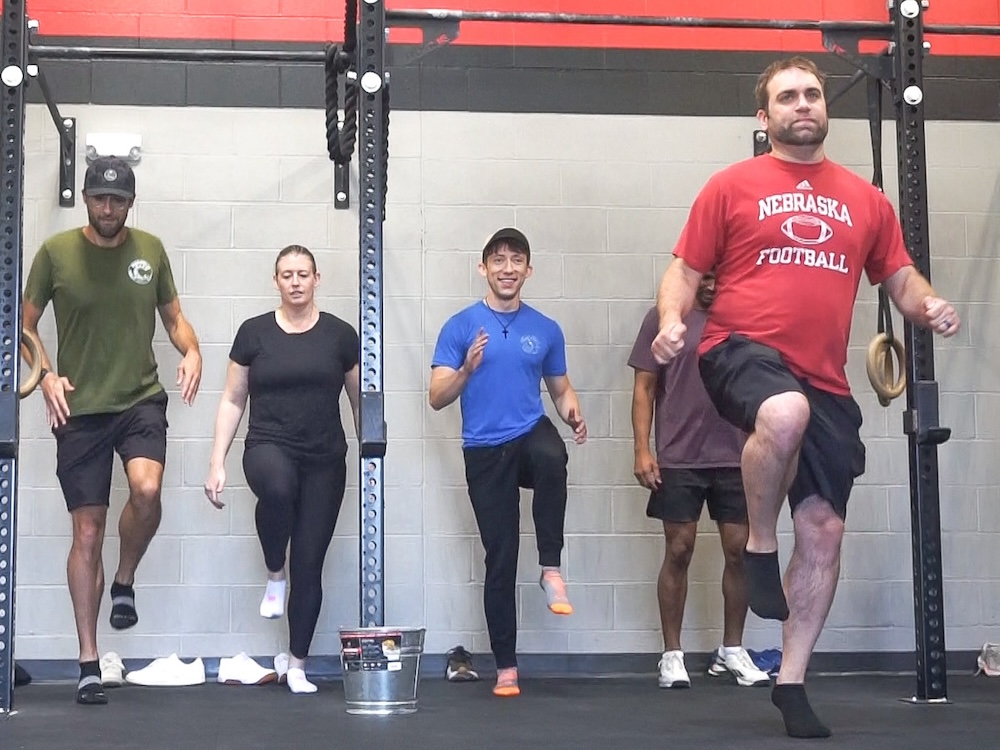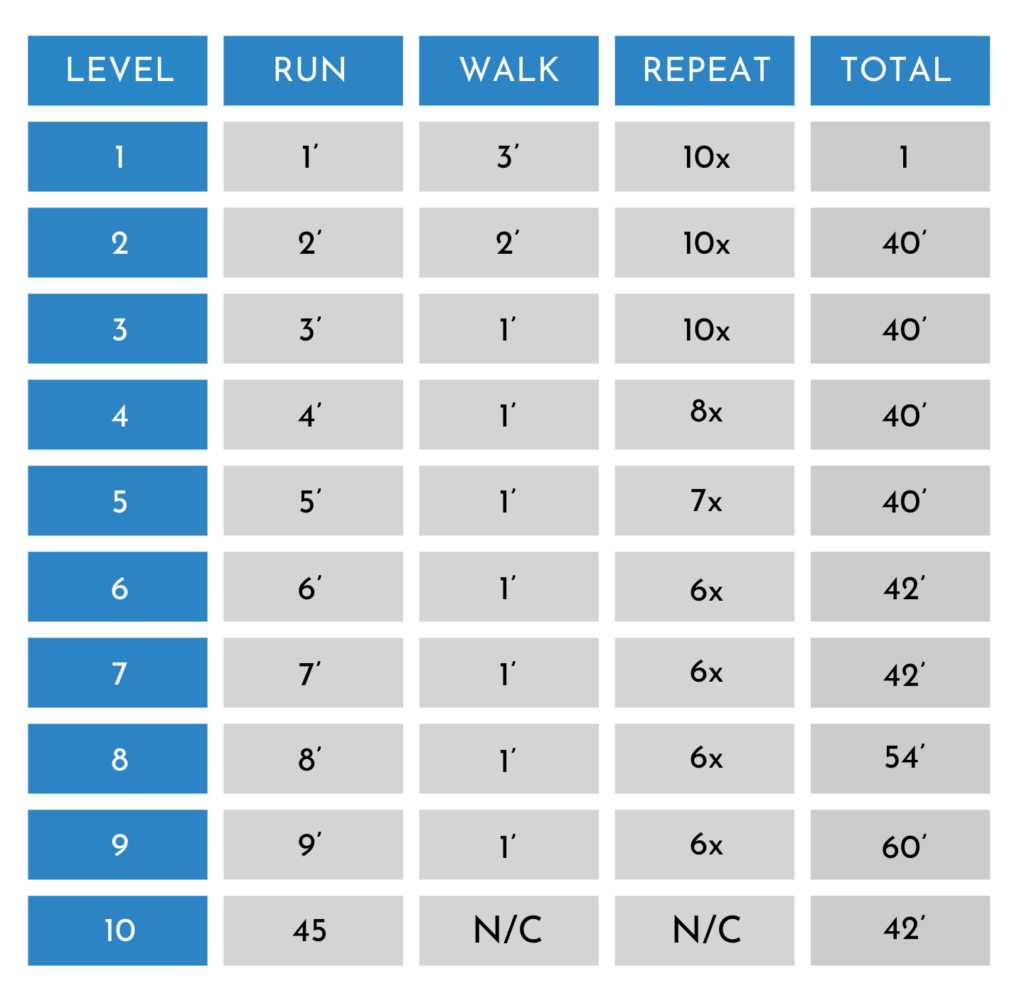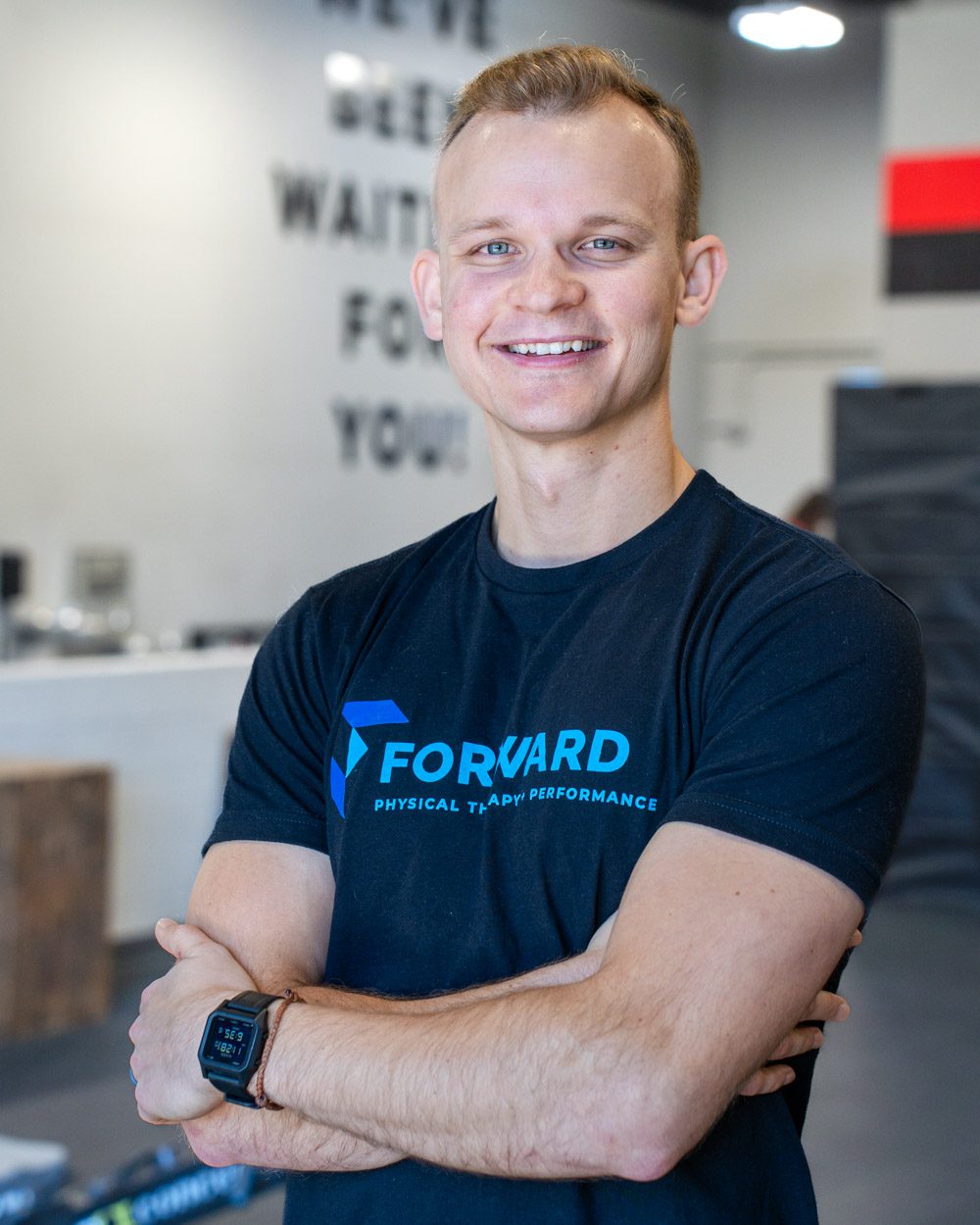
RETURN TO RUNning
For many runners, dealing with an injury can be incredibly frustrating. The desire to get back to training often outweighs the need for a structured recovery process, leading many athletes to return to running without a clear plan. Unfortunately, without a thoughtful strategy, this often results in prolonged injury, setbacks, or reinjury.
At Forward PT, we see a lot of runners who are unsure of how to safely return to running after an injury. The process can be nuanced, requiring careful planning, gradual progression, and a personalized approach. To help guide our patients through this journey, we’ve created a comprehensive “Return to Run Guide,” which outlines the best practices for a safe and effective return to training.
This guide is inspired by the legendary Chris Johnson, a thought leader and legend in the physical therapy (PT) world who has set the standard for effective running rehabilitation programs. We understand how overwhelming it can be to deal with running-related injuries, and our guide is designed to alleviate those concerns by offering a structured and individualized plan.
1. Personalized Framework
Every injury is different, and every runner’s journey to recovery is unique. That’s why we start with a personalized framework that includes a comprehensive movement assessment. This assessment helps us understand your unique injury, biomechanics, and movement patterns. By doing so, we can tailor the recovery plan to suit your specific needs.
This individualized approach allows us to guide you through the decision-making process, helping you recognize how much running your body can handle in the context of pain. Rather than relying on a one-size-fits-all approach, our program is customized based on your pain levels, movement patterns, and recovery goals.
2. Gradual Progression
Runners often make the mistake of jumping back into training too quickly, which can lead to setbacks. Our program emphasizes gradual progression to ensure a safe return to running. Each phase of the program includes a set of progressive exercises that help you slowly increase your workload without overburdening your body.
A key principle of our program is that runners should complete each level twice before advancing to the next stage. This ensures that your body is truly ready for the increased intensity and workload, minimizing the risk of re-injury. The goal is to make steady, controlled progress rather than rushing the process.
3. Intensity Management
Managing intensity is critical in the early stages of your return to running. To help with this, we guide runners to aim for a manageable intensity level—typically around a 3-4/10 on the Rate of Perceived Exertion (RPE) scale, unless otherwise directed by your physical therapist.
By monitoring your intensity and keeping it within this range, you’re more likely to avoid pushing yourself too hard, which is a common cause of injury recurrence. The RPE scale helps ensure that you’re listening to your body and respecting its limits during recovery.

4. Running-Specific Strength Exercises
In addition to the running progression, our program incorporates running-specific strength exercises on non-running days. These exercises are designed to target key muscle groups that support running, such as the hips, glutes, quads, and core.
Building strength in these areas is crucial for supporting your recovery and preventing future injuries. Strengthening your body helps you maintain proper form, absorb impact more effectively, and reduce the strain on injured tissues.
Exercises and drills are carefully selected to align with your recovery stage, allowing you to build a solid foundation before progressing to more advanced movements.
5. Customized Plans
No two injuries are the same, and no two recovery processes are identical. That’s why your starting point and progression rate are customized based on your specific injury, pain levels, and overall health.
Whether you’re recovering from a stress fracture, tendonitis, or another common running injury, we tailor your plan to suit your unique situation. This personalized attention helps us ensure that you’re progressing at the right pace for your body, minimizing the risk of setbacks or overtraining.
6. Monitoring with sRPE
An important tool in our approach is the session Rating of Perceived Exertion (sRPE), which helps you monitor your training workload. The sRPE is a simple yet effective way to keep track of how hard you’re working during each session, allowing you to adjust your intensity as needed.
This self-monitoring tool empowers runners to take control of their recovery and ensures that training workloads remain manageable throughout the process. By regularly checking in with your perceived exertion levels, you can make informed decisions about when to push yourself and when to back off.

Why a Thoughtful Return is Key to Long-Term Success
We understand the eagerness to get back to running, especially for distance runners who rely on the sport as a key part of their daily lives. But rushing back too quickly or without a plan can do more harm than good. By following a structured approach, like the one outlined in our “Return to Running Program,” you’ll give yourself the best chance of returning to the sport stronger and healthier than before.
Our goal at Forward PT is to provide the tools, guidance, and support you need to return to running safely and confidently. With a personalized framework, gradual progression, and expert monitoring, we’ll help you rebuild your strength and endurance while addressing the root causes of your injury.
Whether you’re a seasoned marathoner or a casual runner, our program is designed to help you navigate your recovery journey. With the right plan in place, you’ll be able to get back to the sport you love—without the risk of re-injury.
Let’s get you back on track, one step at a time.
Ready to Return to Running?
Schedule a free phone consultation with a Forward Omaha physical therapist, and take the first step to feeling your best.

Dr. Vince Van Haute PT, DPT, CF-L1, CSCS
I’m the owner and founder of Forward Physical Therapy and Performance. I have worked with numerous athletes that participate in CrossFit, weightlifting, yoga, running and more after they’ve been told by multiple healthcare providers that they have to stop doing what they love. As a physical therapist and strength coach for 9+ years, it has been my mission to help active adults get out of pain and move better so that they can perform at their highest potential.
